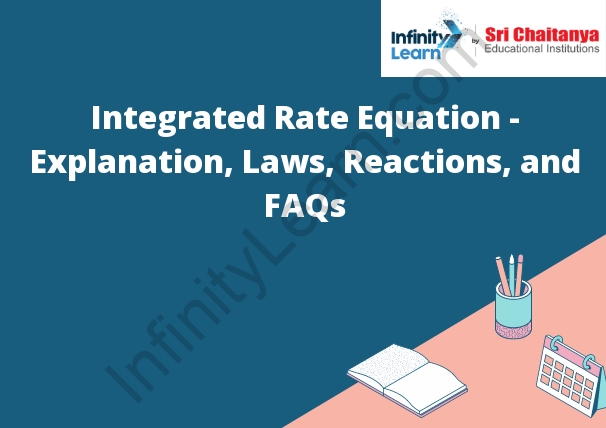Table of Contents
What is an Integrated Rate Equation Mean? ;
The integrated rate equation is a mathematical formula used to calculate the change in a particular quantity over time. The equation can be used to calculate the rate of change of any quantity, including concentration, velocity, or population size. The equation is a mathematical representation of the relationship between the change in a quantity and the time over which that change occurs.

Integrated Rate Law for a Zero-order Reaction
An integrated rate law for a zero-order reaction is
A zero-order reaction is a reaction in which the concentration of the reactant does not change with time. The rate of a zero-order reaction is constant.
Integrated Rate Law for a First-order Reaction
The integrated rate law for a first-order reaction is:
ln[A] = kt
Where [A] is the concentration of the reactant, t is time in seconds, and k is the rate constant.
Integrated Rate Law
The integrated rate law is a mathematical equation that describes the rate of a chemical reaction as a function of time. The equation takes the form of:
rate = k[A]n
where:
rate is the rate of the reaction
k is the reaction rate constant
[A] is the concentration of reactant An is the order of the reaction with respect to A
Factors Affecting the Rate of Reaction
There are a number of factors that can affect the rate of a chemical reaction. The most important factors are the:
1) type of reactants
2) concentration of reactants
3) temperature of reactants
4) surface area of reactants
5) presence of a catalyst
1) Type of Reactants
The type of reactants involved in a reaction can have a big impact on the rate of the reaction. For example, reactions between two different molecules will generally happen faster than reactions between two molecules of the same type. This is because the reactants can collide with each other more easily when they are of different types.
2) Concentration of Reactants
The concentration of reactants can also affect the rate of a reaction. When the concentration of one reactant is increased, the rate of the reaction will generally increase as well. This is because when the reactants are more concentrated, there are more of them available to collide and react.
3) Temperature of Reactants
The temperature of reactants can also affect the rate of a reaction. When the temperature is increased, the reactants will generally move faster and collide with each other more often. This will cause the reaction to happen faster.
4) Surface Area of Reactants
The surface area of reactants can also affect the rate of a reaction. When the surface area is increased, the reactants will have more opportunity to come






